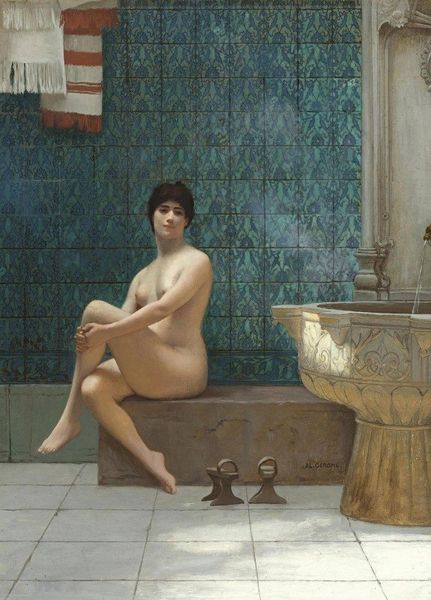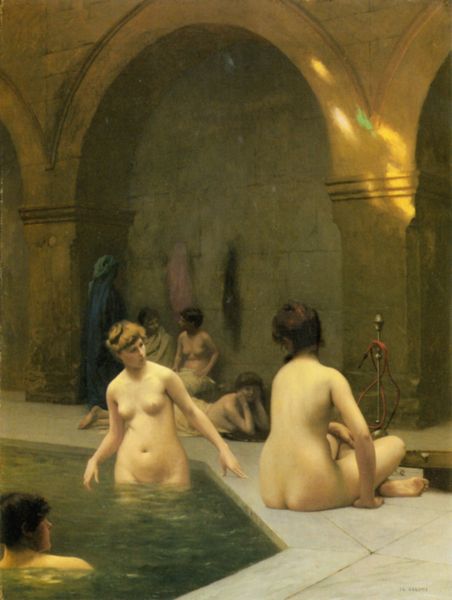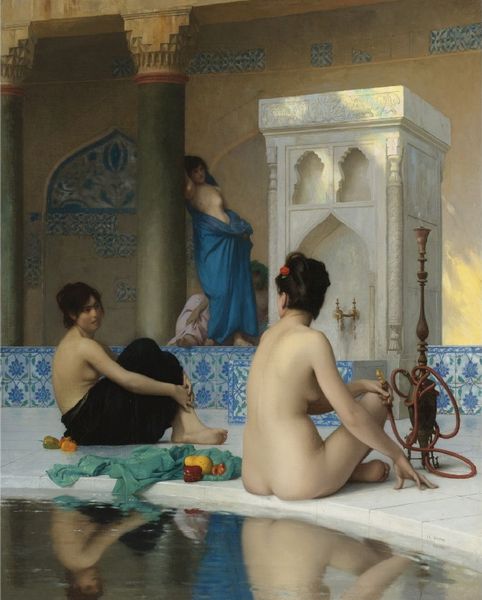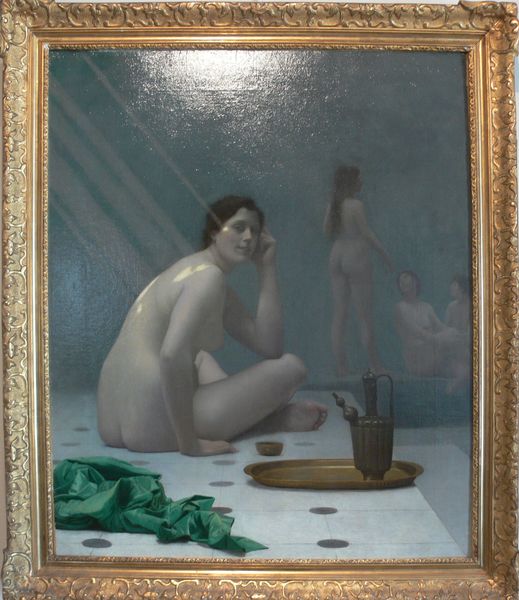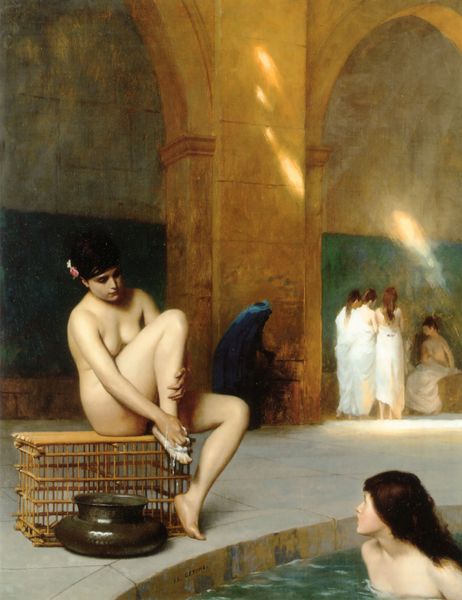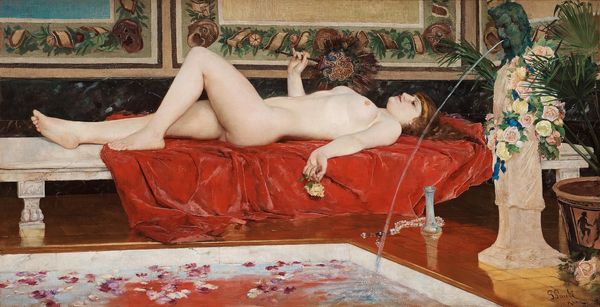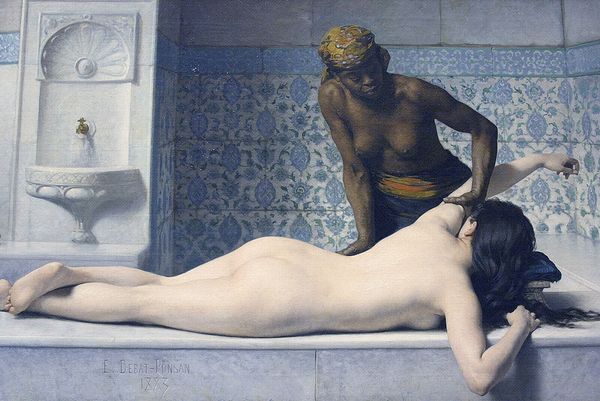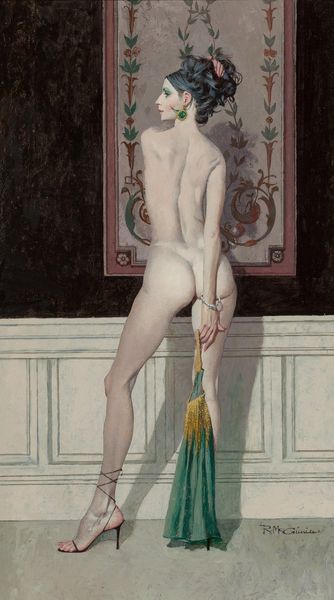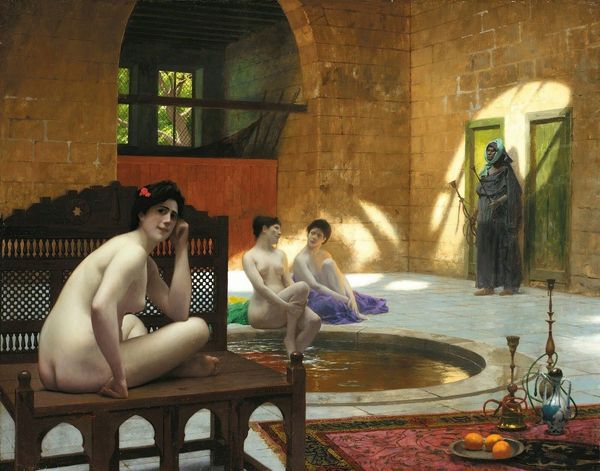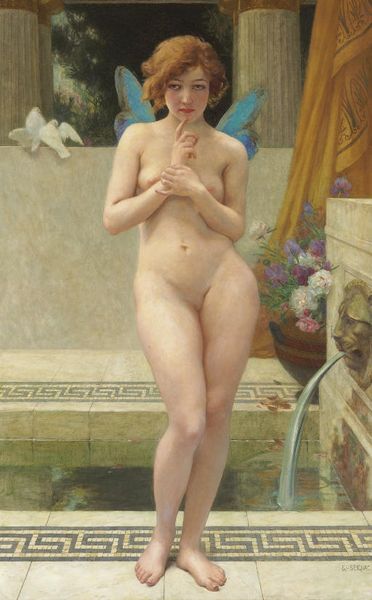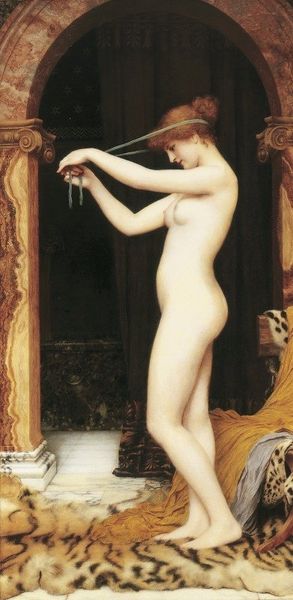
painting, oil-paint
#
painting
#
oil-paint
#
classical-realism
#
figuration
#
orientalism
#
genre-painting
#
history-painting
#
academic-art
#
nude
Copyright: Public domain
Curator: Standing before us is "The Harem Bath", attributed to Jean-Léon Gérôme. Editor: There's an almost oppressive languor to the scene, wouldn't you say? It feels thick, humid… palpable even. It is quite interesting what has been built into this artwork from material presence to representation. Curator: Indeed. Gérôme was a master of orientalist themes. Note how he utilizes these opulent settings, a hallmark of that particular style, here with what appear to be concubines lounging in a bathhouse, a voyeuristic snapshot frozen in oil paint. This wasn’t an actual historical scene for Gerome but a constructed depiction or a fictive one assembled through painting practices. Editor: I'm struck by the almost obsessive detail he lavishes on the surfaces. Look at the tilework—meticulously rendered, yet somehow, it reinforces a sense of disconnect, almost claustrophobia, amidst all the ostensible leisure. The texture work feels decadent on the painted skin versus the constructed tile pattern. Curator: That juxtaposition is quite potent. Each element within this constructed vision reflects complex cultural and societal power dynamics. These orientalist portrayals often functioned as vehicles for European fantasies about the "exotic" East, fueled by projections and often inaccurate representations of customs and identities. Editor: Precisely. These fantasies are created by particular brush strokes and paint pigments being deployed. Take the colors, those teal and blues – the materials of the pigment are manufactured and distributed; it gives these works and others like it an industrial undertone that you do not initially notice because the sensuality overtakes any material questioning. But that industrial, global undertone that tethers back to production makes this orientalist genre, well… uneasy to ponder within art historical practices and discourses. Curator: Very perceptive. The "Harem Bath", like many works of this period, is charged with layers of exoticism, but also, I feel, the symbolism around sexuality, freedom, and, of course, confinement all contribute to its lingering impact. We've decoded some of those tensions at play today in this art object. Editor: It’s in revisiting them where that charge lies—allowing us to grapple with both beauty and unease.
Comments
No comments
Be the first to comment and join the conversation on the ultimate creative platform.
